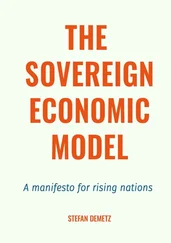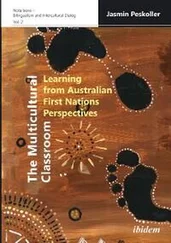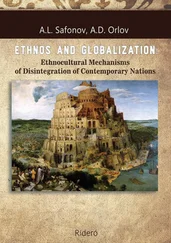These states had absolutist forms of government similar to those in Europe in the same period. The development of political institutions was spurred by similar processes, including technological change in methods of warfare and international trade. State institutions became more centralized, with a king at the center claiming absolute power. Like absolutist rulers in Europe, Southeast Asian kings relied heavily on revenues from trade, both engaging in it themselves and granting monopolies to local and foreign elites. As in absolutist Europe, this generated some economic growth but was a far-from-ideal set of economic institutions for economic prosperity, with significant entry barriers and insecure property rights for most. But the process of commercialization was under way even as the Portuguese were trying to establish their dominance in the Indian Ocean.
The presence of Europeans swelled and had a much greater impact with the arrival of the Dutch. The Dutch quickly realized that monopolizing the supply of the valuable spices of the Moluccas would be much more profitable than competing against local or other European traders. In 1600 they persuaded the ruler of Ambon to sign an exclusive agreement that gave them the monopoly on the clove trade in Ambon. With the founding of the Dutch East India Company in 1602, the Dutch attempts to capture the entire spice trade and eliminate their competitors, by hook or by crook, took a turn for the better for the Dutch and for the worse for Southeast Asia. The Dutch East India Company was the second European joint stock company, following the English East India Company, major landmarks in the development of the modern corporation, which would subsequently play a major role in European industrial growth. It was also the second company that had its own army and the power to wage war and colonize foreign lands. With the military power of the company now brought to bear, the Dutch proceeded to eliminate all potential interlopers to enforce their treaty with the ruler of Ambon. They captured a key fort held by the Portuguese in 1605 and forcibly removed all other traders. They then expanded to the northern Moluccas, forcing the rulers of Tidore, Ternate, and Bacan to agree that no cloves could be grown or traded in their territories. The treaty they imposed on Ternate even allowed the Dutch to come and destroy any clove trees they found there.
Ambon was ruled in a manner similar to much of Europe and the Americas during that time. The citizens of Ambon owed tribute to the ruler and were subject to forced labor. The Dutch took over and intensified these systems to extract more labor and more cloves from the island. Prior to the arrival of the Dutch, extended families paid tribute in cloves to the Ambonese elite. The Dutch now stipulated that each household was tied to the soil and should cultivate a certain number of clove trees. Households were also obligated to deliver forced labor to the Dutch.
The Dutch also took control of the Banda Islands, intending this time to monopolize mace and nutmeg. But the Banda Islands were organized very differently from Ambon. They were made up of many small autonomous city-states, and there was no hierarchical social or political structure. These small states, in reality no more than small towns, were run by village meetings of citizens. There was no central authority whom the Dutch could coerce into signing a monopoly treaty and no system of tribute that they could take over to capture the entire supply of nutmeg and mace. At first this meant that the Dutch had to compete with English, Portuguese, Indian, and Chinese merchants, losing the spices to their competitors when they did not pay high prices. Their initial plans of setting up a monopoly of mace and nutmeg dashed, the Dutch governor of Batavia, Jan Pieterszoon Coen, came up with an alternative plan. Coen founded Batavia, on the island of Java, as the Dutch East India Company’s new capital in 1618. In 1621 he sailed to Banda with a fleet and proceeded to massacre almost the entire population of the islands, probably about fifteen thousand people. All their leaders were executed along with the rest, and only a few were left alive, enough to preserve the know-how necessary for mace and nutmeg production. After this genocide was complete, Coen then proceeded to create the political and economic structure necessary for his plan: a plantation society. The islands were divided into sixty-eight parcels, which were given to sixty-eight Dutchmen, mostly former and current employees of the Dutch East India Company. These new plantation owners were taught how to produce the spices by the few surviving Bandanese and could buy slaves from the East India Company to populate the now-empty islands and to produce spices, which would have to be sold at fixed prices back to the company.
The extractive institutions created by the Dutch in the Spice Islands had the desired effects, though, in Banda this was at the cost of fifteen thousand innocent lives and the establishment of a set of economic and political institutions that would condemn the islands to underdevelopment. By the end of the seventeenth century, the Dutch had reduced the world supply of these spices by about 60 percent and the price of nutmeg had doubled.
The Dutch spread the strategy they perfected in the Moluccas to the entire region, with profound implications for the economic and political institutions of the rest of Southeast Asia. The long commercial expansion of several states in the area that had started in the fourteenth century went into reverse. Even the polities which were not directly colonized and crushed by the Dutch East India Company turned inward and abandoned trade. The nascent economic and political change in Southeast Asia was halted in its tracks.
To avoid the threat of the Dutch East India Company, several states abandoned producing crops for export and ceased commercial activity. Autarky was safer than facing the Dutch. In 1620 the state of Banten, on the island of Java, cut down its pepper trees in the hope that this would induce the Dutch to leave it in peace. When a Dutch merchant visited Maguindanao, in the southern Philippines, in 1686, he was told, “Nutmeg and cloves can be grown here, just as in Malaku. They are not there now because the old Raja had all of them ruined before his death. He was afraid the Dutch Company would come to fight with them about it.” What a trader heard about the ruler of Maguindanao in 1699 was similar: “He had forbidden the continued planting of pepper so that he could not thereby get involved in war whether with the [Dutch] company or with other potentates.” There was de-urbanization and even population decline. In 1635 the Burmese moved their capital from Pegu, on the coast, to Ava, far inland up the Irrawaddy River.
We do not know what the path of economic and political development of Southeast Asian states would have been without Dutch aggression. They may have developed their own brand of absolutism, they may have remained in the same state they were in at the end of the sixteenth century, or they may have continued their commercialization by gradually adopting more and more inclusive institutions. But as in the Moluccas, Dutch colonialism fundamentally changed their economic and political development. The people in Southeast Asia stopped trading, turned inward, and became more absolutist. In the next two centuries, they would be in no position to take advantage of the innovations that would spring up in the Industrial Revolution. And ultimately their retreat from trade would not save them from Europeans; by the end of the eighteenth century, nearly all were part of European colonial empires.
WE SAW IN CHAPTER 7 how European expansion into the Atlantic fueled the rise of inclusive institutions in Britain. But as illustrated by the experience of the Moluccas under the Dutch, this expansion sowed the seeds of underdevelopment in many diverse corners of the world by imposing, or further strengthening existing, extractive institutions. These either directly or indirectly destroyed nascent commercial and industrial activity throughout the globe or they perpetuated institutions that stopped industrialization. As a result, as industrialization was spreading in some parts of the world, places that were part of European colonial empires stood no chance of benefiting from these new technologies.
Читать дальше












